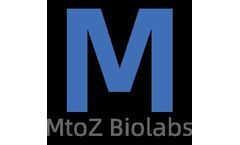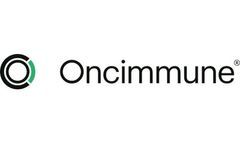Immune Activating Articles & Analysis
22 articles found
It’s a sophisticated, three-tiered enzymatic cascade: Activation (E1): An E1 activating enzyme uses energy (ATP) to "prime" a ubiquitin molecule, making it ready for transfer. Conjugation (E2): The activated ubiquitin is then handed off to an E2 conjugating enzyme. Ligation (E3): The E3 ligase is the true matchmaker. ...
This broad proteolytic range allows ELANE to participate in both antimicrobial defense and extracellular matrix degradation, making it a potent and versatile effector of innate immunity. The recombinant form of ELANE protein is typically expressed in eukaryotic systems to preserve post-translational modifications and enzymatic activity. ...
Mouse models play a pivotal role in this field, as their immune system shares many similarities with that of humans. A key aspect of studying the immune system involves analyzing cytokines, chemokines, and growth factors—molecules that regulate immune responses and influence disease progression. ...
Even though PEG-modified NPs will still cause immune rejection responses to some degree in the body, the "stealth coating" inspired researchers. ...
These protein drugs exhibit certain biological activity and can prevent, diagnose, and treat diseases in humans, animals, and plants. Compared with small molecular drugs, recombinant protein drugs offer advantages such as high activity, high specificity, and low toxicity, and are therefore favored by researchers. ...
Immune receptors, which are protein molecules expressed on the membrane of immune cells, play a key role in regulating immune responses. These receptors can interact with specific ligands to trigger a cascade of events that lead to the activation or suppression of immune responses. Immune ...
Antigens are molecules or molecular structures that evoke an immune response when identified as foreign by the body's immune system. ...
They often interact with other signaling molecules and receptors to regulate cellular activities. Inflammation and Immune Responses: Some Ig-superfamily CADMs are involved in inflammatory responses, guiding leukocytes (white blood cells) to sites of inflammation or injury. The Mechanism CADM is pivotal in governing numerous cellular functions, such as ...
Mechanism of Vaccine Adjuvants Vaccine excipients, including adjuvants, are added to vaccine formulations to enhance the immune response by providing necessary signals to the immune system. Adjuvants can stimulate the innate immune system, improving the recognition of antigens and promoting a more robust adaptive immune response. ...
The team first exposed mice to lipopolysaccharide (LPS), a component of the bacterial cell wall that activates the immune system and effectively induces uncomfortable behavior. Shortly after LPS injection there was a surge of activity in the region of the dorsal vagal complex in the brainstem and these neurons expressed the neuropeptide ADCYAP1. ...
During the hydrolysis process, the specific optical rotation of sucrose gradually changes from dextrorotatory to levorotatory, so the hydrolysis of sucrose is also commonly referred to as a conversion reaction. There are 8 chemically active hydroxyl groups and glycosidic bonds in the sucrose molecule, through which these groups can theoretically undergo oxidation, reduction, ...
T1D goes through several stages before the onset and the clinical diagnosis is obtained. In fact, the immune response is activated before T1D is diagnosed, and by the time the diagnosis is made, islet autoantigen-specific T cells have destroyed a considerable number of beta cells. ...
OCD is a multifactorial disorder with an interplay of biological, psychological, and external factors, and immune system activation is also an important etiology. OCD induced by pathogenic infections PANDAS Obsessive-compulsive symptoms (OCS) may be associated with Pediatric Autoimmune Neuropsychiatric Disorder Associated with Streptococcal infection (PANDAS) ...
The ultimate goal of cancer vaccines is to fully activate the immune system so that it can recognize tumor antigens and eradicate tumor cells, and nanotechnology possesses the qualities required to do this. Nanovaccine technology, as one of the candidates for cancer immunotherapy with configurable components and sequential integration, will most likely be a ...
According to animal and human data, they found that the accumulation of this clotting protein called fibrin triggers an excessive immune response that damages the gingiva and underlying bones. They point out that inhibition of abnormal fibrin activity may hold promise for the prevention or treatment of periodontal disease, as well as other inflammatory diseases ...
ByMatexcel
Abzyme, also known as catalytic antibody, is a type of immunoglobulin with catalytic ability, that is, an antibody with catalytic activity prepared through a series of chemical and biotechnological methods. It not only has the corresponding immune activity, but also can catalyze a certain chemical reaction like an enzyme. ...
Traditional immunotherapies, such as immune-activating cytokine therapy, checkpoint inhibition, engineered T-cells, etc., do not directly destroy cancer cells, but completely depend on activating the immune system. NIR-PIT can selectively destroy cancer cells while activating the body's immune ...
The extent to which all major components of the adaptive immune system are activated will also be measured. In a prior Phase 2 drifted H3N2 challenge trial, M2SR demonstrated efficacy against infection and illness across seven years of flu virus drift. Previous studies have also demonstrated that, unlike currently licensed influenza vaccines administered by ...
Oncimmune’s ImmunoINSIGHTS can leverage the power of these antibodies – regarded as sentinels of the adaptive immune response to cancer – as prospective biomarkers in immunotherapy development programmes. Our work has demonstrated the ability of autoantibodies to help predict therapy outcomes, immune-related adverse events (irAEs) and ...
Some of the primary reasons for the popularity of the method are that ELISpot is highly quantitative, can measure a broad range of magnitudes of response and is capable of assessing critical cellular immune-related activities such as IFN-g secretion and granzyme B release. Furthermore, ELISpot is adaptable not only to the evaluation of a variety of T-cell ...
















